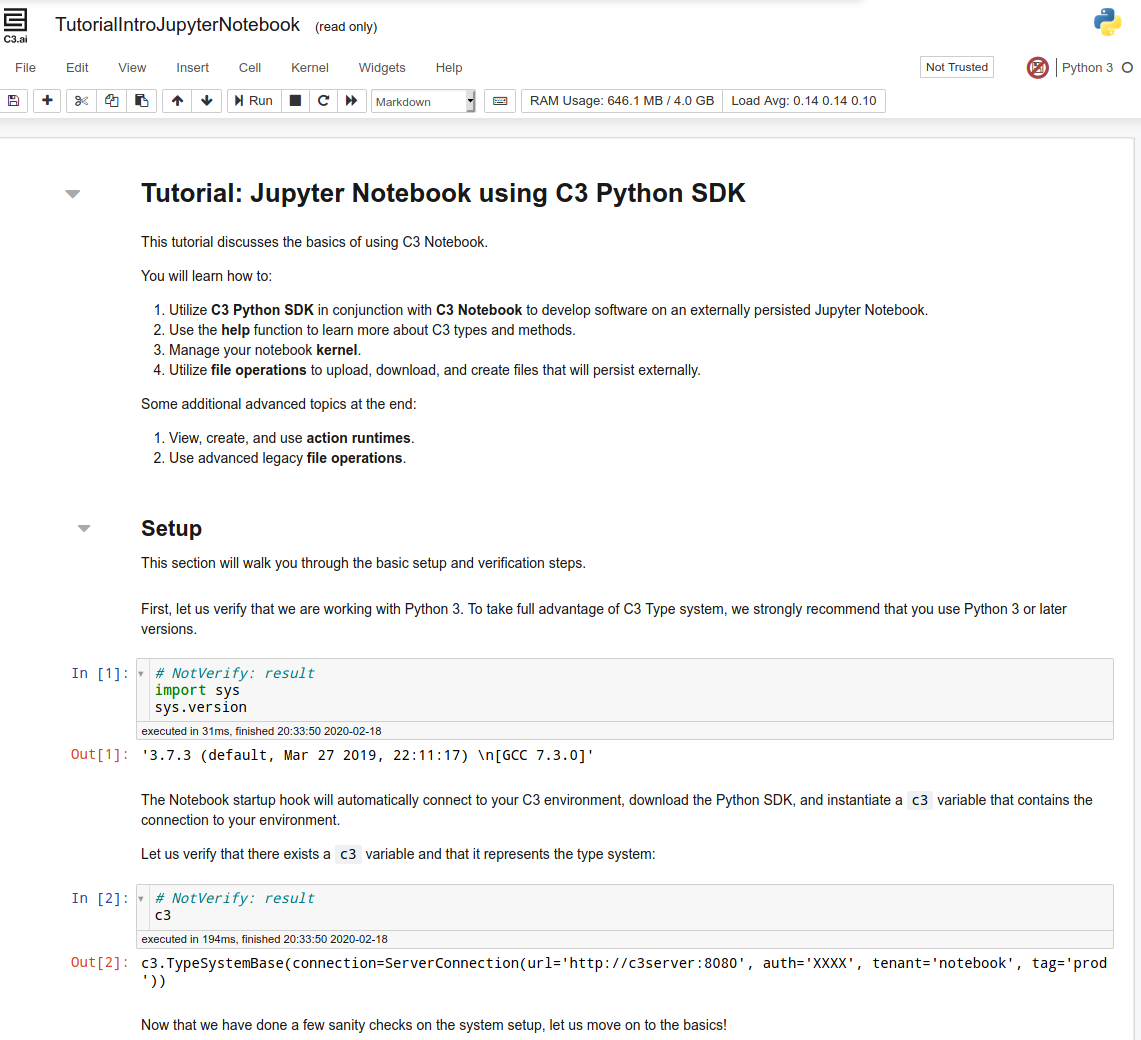
For scientists wanting to jump right into using C3 AI Suite through Python or R, the integrated Jupyter notebook is a great option. Once you get your C3 AI environment tenant/tag (and Vanity Url), you can easily access the integrated Jupyter Notebook by navigating to `<vanity_url>/jupyter`.
When you access the Jupyter path, C3 AI will spin up a new container containing a Jupyter instance. The first time you do this, it will take a few minutes for this provisioning to be completed behind the scenes. Once completed, you'll arrive at a Jupyter directory!
Here is some additional guidance for setting up the Python Runtime Action: DTI Guide to Python Action Runtimes in the C3 AI Suite.

There are a couple of options to interact with the Jupyter notebooks:
This notebook comes already connected to the package currently provisioned on your tenant/tag and so, for example, if you have the Covid-19 Data Lake provisioned you'll be able to do the following with no preparation:
Simply navigate to the `tutorials` directory and select the tutorial you want to use. These tutorial notebooks should work out of the box. The C3.ai DTI highly recommends going through the `TutorialIntroJupyterNotebook.ipynb` notebook. This notebook provides a great foundation for working with C3 AI Suite through Jupyter.

Finally, you can upload a new notebook from your local device by using the 'Upload' button.